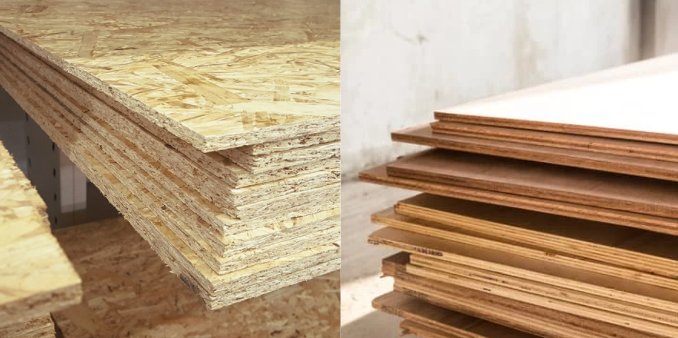
When it comes to constructing a subfloor, two materials dominate the conversation: OSB (Oriented Strand Board) and plywood. Both of these materials have been long used in residential and commercial construction for subflooring applications. However, there are notable differences between them that homeowners and builders need to understand when choosing the best material for their subfloor project.
In this article, we will explore the key features, advantages, and disadvantages of OSB vs plywood subfloor options. We will dive deep into the differences between OSB and plywood in terms of durability, cost, installation ease, and long-term performance. By the end, you will be equipped with all the knowledge needed to make an informed decision on whether OSB or plywood is the right subfloor material for your construction project.
OSB vs Plywood for Subflooring: Which is Better?
When you’re considering subfloor options, the first question that usually arises is: OSB vs plywood subfloor, which one should I choose? This is not a simple answer, as it depends on several factors, including cost, climate, and desired longevity. Both materials serve the same function but have different characteristics that could influence their suitability for your needs.
Let’s take a closer look at how OSB vs plywood for subflooring compares in several key areas, starting with their durability.
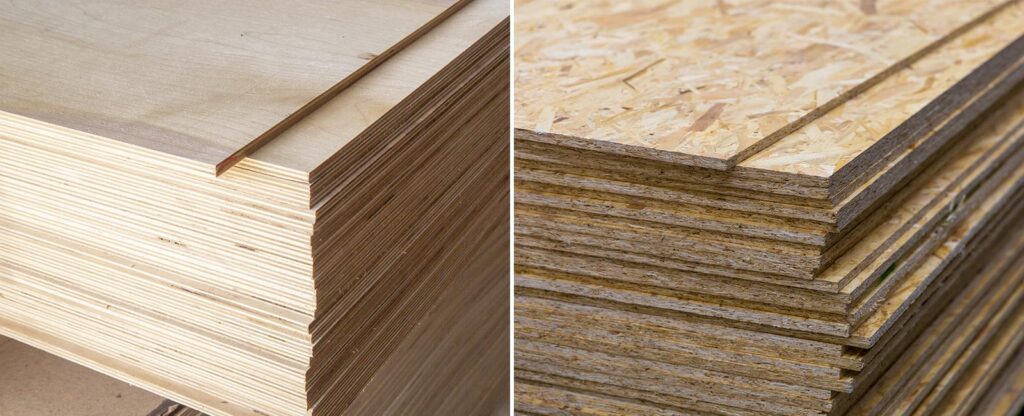
The Durability Debate: OSB vs Plywood
Durability is a crucial factor when deciding between OSB and plywood for your subfloor. While both materials are designed to support flooring materials, they differ in how they handle moisture, weight, and wear over time.
Plywood is generally known for being more durable than OSB in high-moisture environments. Due to its layered structure, plywood holds up better under constant exposure to water. If your construction project involves areas prone to humidity, like basements or bathrooms, plywood vs OSB for subflooring might be a more practical choice.
Plywood’s durability comes from its multiple layers of thin wood veneer, which are bonded with strong adhesives. These layers give plywood its natural strength and resilience, making it ideal for environments where moisture could be a concern. Because plywood is made from real wood, it can withstand wear and tear better than other materials, especially when it comes to long-term performance.
On the other hand, OSB has made significant improvements in moisture resistance. Many modern versions of OSB are treated with special coatings to prevent water absorption. However, OSB still typically doesn’t perform as well as plywood in extreme moisture conditions. If you’re installing flooring in an area where water exposure is a high risk, such as a laundry room or a kitchen, OSB vs plywood might tip in favor of plywood.
One important note is that OSB is often used in new construction and remodels, where it can be better protected during installation. If the subfloor is sealed well and the home is kept dry, OSB can be a durable option, especially for regions where moisture is less of a concern.
Cost Considerations: OSB vs Plywood for Subfloor Installation
When comparing OSB vs plywood for subfloor installation, cost is a major factor. OSB is usually the cheaper of the two options, making it an attractive choice for homeowners on a budget. The production of OSB is more cost-effective due to the materials used, such as smaller wood strands and less expensive adhesive.
Plywood, on the other hand, is often more expensive due to its higher-quality wood veneer layers and the labor-intensive manufacturing process. For those looking to cut costs on the subfloor, OSB vs plywood can come down to a significant price difference that might influence the decision-making process.
It’s important to note that the cost of materials isn’t the only financial consideration when it comes to subflooring. Installation costs can vary depending on the type of material. Since OSB compared to plywood for subflooring can be easier to handle due to its lighter weight, some builders may find that the labor costs associated with OSB installation are lower. However, plywood’s superior long-term durability may reduce the need for future repairs or replacements, making it more cost-effective in the long run.
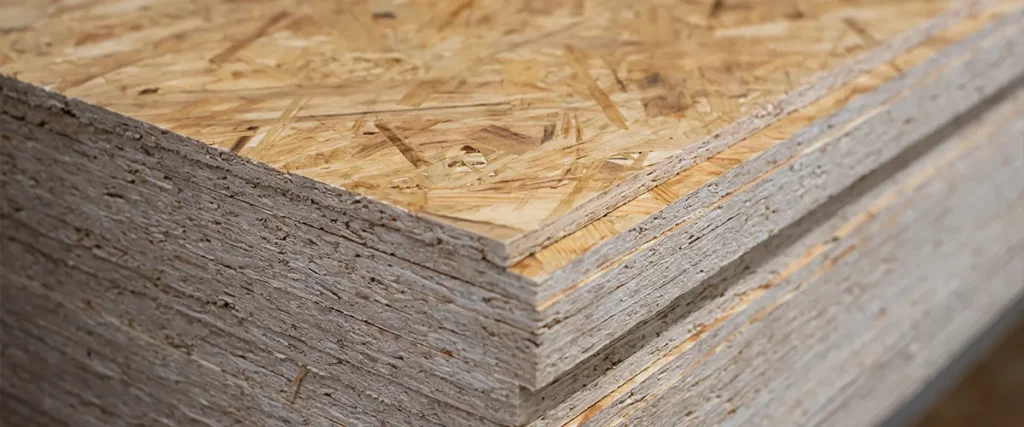
Installation Ease: OSB or Plywood for Subfloor?
Another aspect of the debate between OSB vs plywood subfloor is the ease of installation. While both materials are relatively easy to work with, OSB tends to be lighter than plywood. This can make handling and cutting easier during installation. For DIYers or contractors working with a team, OSB vs plywood for subfloor installation can be a major advantage, as it requires less effort to transport and move around.
However, plywood’s structural integrity means it might be less prone to warping, bowing, or bending during the installation process. While OSB can be more flexible in some areas, plywood vs OSB has the edge when it comes to stability. This means that if your subfloor installation requires high precision and a more uniform surface, plywood could be a better choice.
When comparing OSB and plywood for subfloor comparison, you might find that both materials are similar in installation but will behave differently under pressure over the long term. OSB has more of a tendency to expand when wet, which can lead to difficulties if it is not properly installed or sealed. If your subfloor is in a high-moisture area, this could cause OSB to buckle and degrade faster than plywood.
Long-Term Performance: OSB vs Plywood for Subflooring
When evaluating OSB vs plywood as a subfloor material, it’s important to consider the material’s long-term performance. Plywood has proven itself over decades of use, holding up well under a variety of conditions. Plywood vs OSB for subflooring becomes an important issue when thinking about the future; plywood’s reputation for reliability in supporting floor finishes remains strong.
OSB, however, is not far behind. In many modern subfloor installations, OSB compared to plywood for subflooring is becoming more popular due to its strength and versatility. OSB is known for its high bending strength and stiffness, making it ideal for supporting heavy floor loads. This is particularly true in large open spaces or areas where the subfloor will need to support additional weight, like in commercial buildings or homes with heavy furniture.
But there’s a catch: OSB vs plywood subfloor materials react differently to moisture. Over time, OSB may degrade and lose its rigidity faster than plywood if exposed to excessive moisture. Proper sealing and installation techniques can minimize these issues, but it’s an important consideration for long-term durability. If your building is located in an area with a high level of humidity, it is crucial to properly seal the edges of the OSB boards and protect them from direct exposure to water. Without proper care, OSB can begin to swell, deteriorate, or even become a breeding ground for mold.
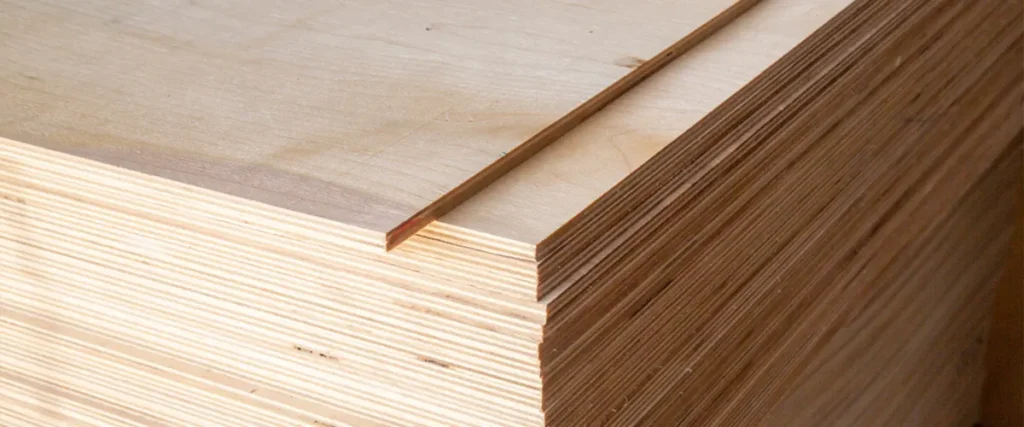
Choosing Between OSB and Plywood for Subfloor: What You Need to Know
When it comes time to choose between OSB or plywood for subfloor, several factors should influence your decision. Here are some key points to consider when making your choice:
The Environment: Moisture Levels Matter
The moisture levels in your home or project space play a significant role in deciding whether OSB or plywood for subfloor is right for you. In areas with high humidity or moisture, plywood is generally preferred due to its superior moisture resistance. Plywood’s multi-layer construction offers a natural defense against water absorption, ensuring that it stays in good condition in damp environments.
However, for dry environments, OSB vs plywood might not make a huge difference. OSB performs quite well in dry conditions and can provide sufficient support for floors in areas where moisture isn’t an issue. In climates where the air is generally dry, the difference in performance between OSB and plywood is less pronounced.
Cost-Benefit Analysis
For homeowners working within a tight budget, OSB vs plywood for subflooring can come down to price. While OSB is typically cheaper, plywood may offer better long-term value in terms of durability and performance. If your budget allows, investing in plywood could save you money in the long term by reducing the need for future repairs or replacements.
However, OSB compared to plywood for subflooring is a great choice for those who want to keep upfront costs down without sacrificing much in performance. As long as you take the necessary precautions, such as proper installation and sealing, OSB can still perform well in most subfloor applications.
Installation Skills
If you’re a DIYer, OSB vs plywood for subfloor installation will depend on your skill level. OSB is easier to work with for beginners due to its lighter weight, but if you’re experienced with flooring materials, you may prefer the stability and strength that plywood offers. Plywood vs OSB for subflooring can be a personal choice based on your comfort level and the specific demands of the project.
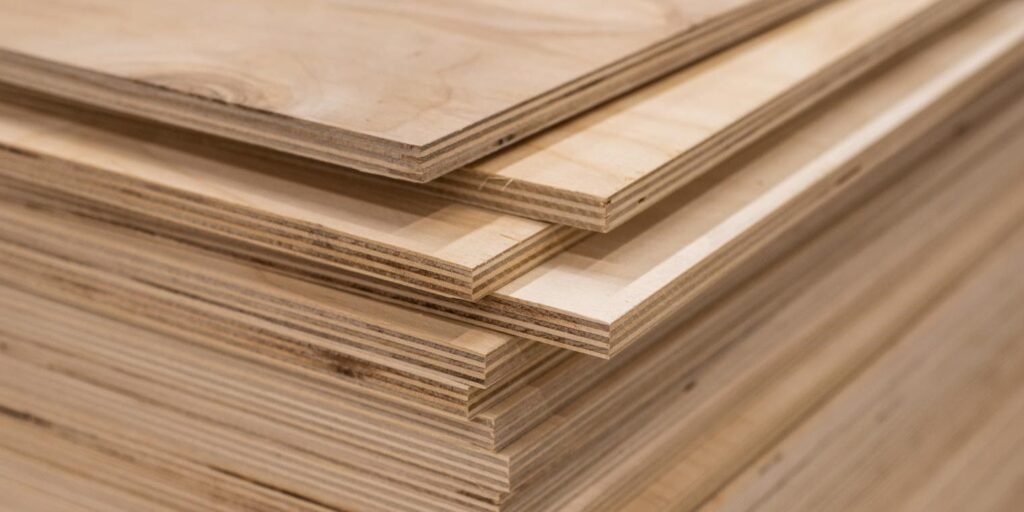
The Verdict: OSB vs Plywood as a Subfloor Material
So, which is better for your subfloor: OSB vs plywood? It ultimately depends on your specific project needs. If you’re seeking affordability and ease of installation, OSB compared to plywood for subflooring may be the ideal solution. However, if durability, long-term performance, and moisture resistance are paramount, OSB vs plywood subfloor tilts in favor of plywood.
When considering all of these factors, it’s clear that both materials have their pros and cons. Plywood vs OSB for subflooring boils down to what matters most for your specific needs, whether it’s cost, durability, or installation ease. By assessing your environment and budget, you’ll have a better understanding of which material will best suit your construction project.
Subfloor Options: Which One Fits Your Needs?
Before making your final choice between OSB and plywood for subfloor comparison, consider your specific requirements. Are you working on a budget? Do you need a material that will stand the test of time in a wet environment? Weighing the pros and cons of each material, and evaluating how they’ll perform in your particular space, will help you make the best decision.
OSB vs Plywood Subfloor: A Clear Comparison
This table provides a side-by-side comparison of OSB and plywood subfloor materials, highlighting key differences in cost, strength, moisture resistance, and durability. Use it to determine which material is best suited for your specific construction needs.
| Characteristic | OSB (Oriented Strand Board) | Plywood |
|---|---|---|
| Cost | Cheaper, making it more affordable for budget projects | More expensive, but may offer better long-term value |
| Strength | High bending strength and stiffness | Very strong, especially under load and moisture exposure |
| Moisture Resistance | Can absorb moisture if not treated with special coatings | Better moisture resistance due to its layered structure |
| Warp Resistance | More prone to warping and swelling when exposed to moisture | Less likely to warp, reacts less to moisture |
| Ease of Installation | Lighter and easier to install | Heavier, requiring more effort during installation |
| Durability | Less durable under long-term moisture exposure | More durable, especially in high-moisture environments |
| Eco-Friendliness | May contain more chemicals (e.g., formaldehyde) | May contain fewer chemicals in certain types |
| Suitable for Heavy Loads | Performs well under heavy loads | Ideal for areas requiring high strength and longevity |
| Manufacturing Process | Less complex and cheaper to produce, uses less quality wood | More complex and labor-intensive, requires higher-quality wood |
| Dimensional Stability | May change shape with humidity, requiring additional protection | Maintains stability even in high-humidity conditions |
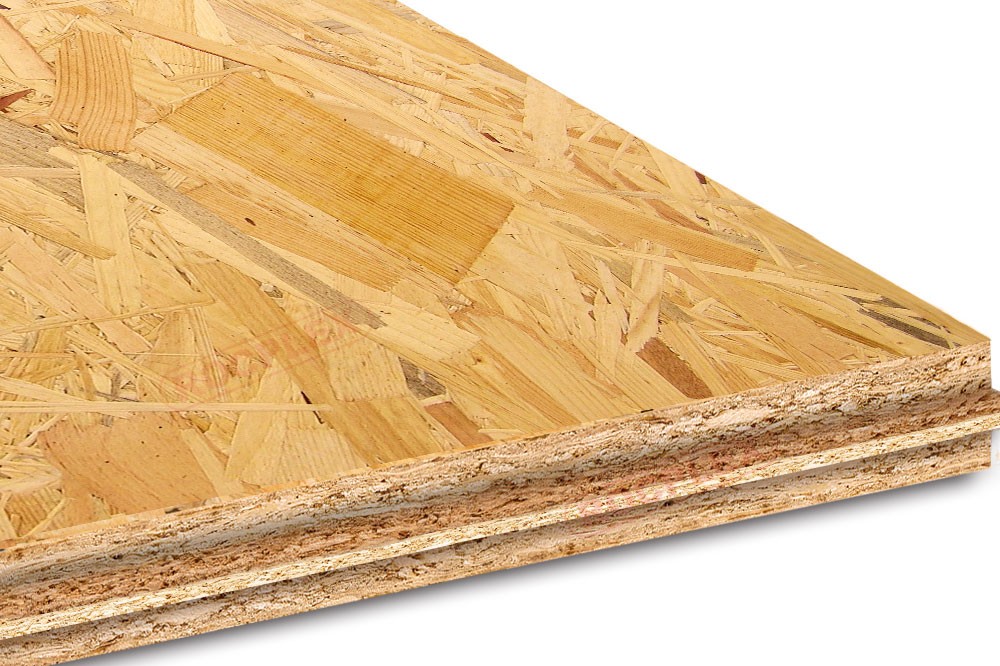
Wrapping Up: Final Thoughts on OSB vs Plywood Subflooring
When choosing between OSB vs plywood subfloor, there is no one-size-fits-all answer. Both materials have distinct advantages that make them ideal for specific situations. Plywood vs OSB for subflooring comes down to factors like cost, moisture resistance, and long-term durability.
Whether you’re remodeling your home, building a new construction, or replacing your subfloor, understanding the differences between OSB vs plywood for subfloor installation will guide you toward the right material. Always take into consideration the moisture levels, the environmental conditions, and your budget before making a final decision.
In the battle of OSB or plywood for subfloor, each material shines in different areas, and it’s up to you to decide which will best meet your construction goals.